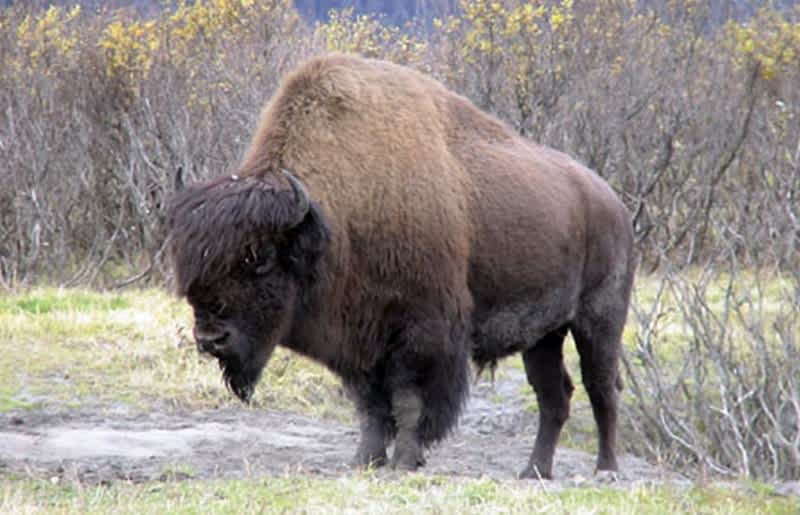Wood Bison to Be Reintroduced to Alaska after 100-year Absence
OutdoorHub Reporters 03.30.15

For the first time in over a century, Alaska will be home to a wild herd of wood bison. According to KTUU, a group of 100 bison have safely arrived in Shageluk from the Alaska Wildlife Conservation Center, where the animals were kept since they were first transported to the state in 2008. Now, the herd is awaiting release into the wild.
“We’ve been at this project for more than 23 years, for all practical purposes, but we only got the go ahead last October,” said Cathie Harms, a biologist with the Alaska Department of Fish and Game (DFG).
Wood bison are the largest land animals in North America and can weigh up to 2,000 pounds, beating out even the plains bison. Despite all their bulk, the animals were incapable of dealing with human expansion and by the start of the twentieth century became locally extinct in Alaska. Now the DFG is undergoing a grand experiment to bring them back, hoping to duplicate the department’s success with musk oxen—which now number in the thousands.
“Many Alaskans hope the same thing can happen with wood bison. These oversize cousins to the plains bison are the largest land animal in North America and still inhabit a few areas in western Canada,” the DFG wrote on its website. “Bob Stephenson, the Alaska Department of Fish and Game Yukon Flats area biologist, began work on wood bison reintroduction in the early 1990s, in partnership with tribal councils and others. ADFG has found that wood bison restoration has broad appeal and is supported by Native groups, hunters, conservation organizations and biologists outside the department of Fish and Game. But times have changed since the days of the musk oxen restoration, and reintroducing wood bison to Alaska has met some surprising hurdles.”
Those hurdles, which included concerns from landowners who feared their property would be listed as critical habitat, locked up a small Canadian herd behind fences for years. According to the Associated Press, state and federal governments compromised by agreeing to label wood bison under an “experimental” status instead of as endangered, which means that land will not be listed under federal oversight. With that settled, the bison were cleared for transport.
The journey was a bumpy one, especially since the bison had to be stuffed inside cargo planes where trampling was a concern. Each C-130 Hercules could only fit just about a dozen adult wood bison and it took two flights a day for half a week until the bison arrived in Shageluk on Tuesday.
“Some of them trotted out,” Harms told the AP. “Some of them galloped out. Some of them made it all the way to the opposite end of the pen, as far away from people as they could get. Some of them stopped 15 feet from the box and started eating hay.”
The bison are slated to be released into the wild over the next few weeks.

